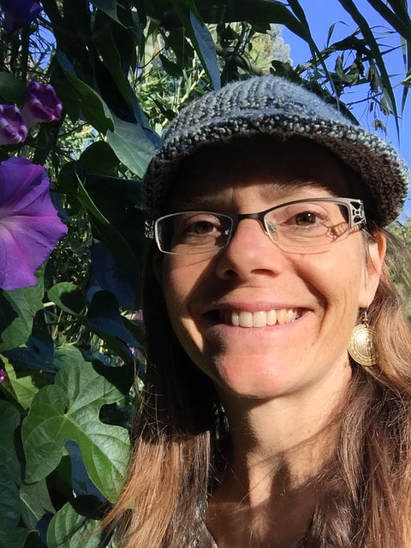
Kelli Peacock:
Kelli Peacock is a certified Hanna Somatic Educator and Somatic Yoga Instructor in association with the Novato Institute of Somatic Research. She has been active in the healing community for 17 years also certified in Zen Shiatsu, Advanced Traditional Acupressure and Zentherapy Bodywork and Trigger Point Therapy. Since 2011, she has also studied Reichian Breathwork and Kundalini Yoga with Michele T. Newmark and Dr. Siri Gian Khalsa.
Somatic Yoga uses a system of slow and gentle movements to help release habitual postural patterns, acute and chronically held muscles, postural issues and physical trauma. Somatics is a motor-sensory training that works with your neuromuscular system to reset tension levels and brings more ease of movement. When a group of chronically held muscles are contracted, it is the neuromuscular system that is out of balance. Somatic Yoga focuses on how to move "from the inside out" recovering a sense of balance from within to gain more flexibility and voluntary control within the muscle groups, with a focus on the contraction and utilization of the muscles. Visualization and breath work is used to enhance experiencing our bodies from within.
Hanna Somatic Education, HSE, uses a system of slow and gentle movements to help release habitual postural patterns that are often created from stress, repetitive motion, injury and trauma. HSE is relaxing and involves gaining an understanding of how the muscles and nervous system works together. Everything is done with a conscious intention of contracting and releasing, without force and focusing on internal sensations of the movement. Our muscles have a sense of forgetting, like amnesia, when not used properly or held in chronic tension over long periods of time. When the brain invites the awareness through movement in the body, the amnesia dissipates and the use of the muscle becomes readily available. HSE works with the sensory-motor system of unlocking the poor postural patterns for more freedom in movement. In a traumatic event in someone’s life, there is an involuntary spastic response to pain guarding an injured site. When an injury happens, the balance in the body will be compensated and it will adjust by tightening. In relationship with gravity, this compensation can organize itself in different ways. Scoliosis is a good example of this reflex. The body will look twisted or curved in response to the trauma and the body will save that in the muscle memory. HSE is helpful for many common ailments such as low back pain, sciatica, carpal tunnel, frozen shoulder and arthritis.
More about 'who we are'.
Kelli Peacock is a certified Hanna Somatic Educator and Somatic Yoga Instructor in association with the Novato Institute of Somatic Research. She has been active in the healing community for 17 years also certified in Zen Shiatsu, Advanced Traditional Acupressure and Zentherapy Bodywork and Trigger Point Therapy. Since 2011, she has also studied Reichian Breathwork and Kundalini Yoga with Michele T. Newmark and Dr. Siri Gian Khalsa.
Somatic Yoga uses a system of slow and gentle movements to help release habitual postural patterns, acute and chronically held muscles, postural issues and physical trauma. Somatics is a motor-sensory training that works with your neuromuscular system to reset tension levels and brings more ease of movement. When a group of chronically held muscles are contracted, it is the neuromuscular system that is out of balance. Somatic Yoga focuses on how to move "from the inside out" recovering a sense of balance from within to gain more flexibility and voluntary control within the muscle groups, with a focus on the contraction and utilization of the muscles. Visualization and breath work is used to enhance experiencing our bodies from within.
Hanna Somatic Education, HSE, uses a system of slow and gentle movements to help release habitual postural patterns that are often created from stress, repetitive motion, injury and trauma. HSE is relaxing and involves gaining an understanding of how the muscles and nervous system works together. Everything is done with a conscious intention of contracting and releasing, without force and focusing on internal sensations of the movement. Our muscles have a sense of forgetting, like amnesia, when not used properly or held in chronic tension over long periods of time. When the brain invites the awareness through movement in the body, the amnesia dissipates and the use of the muscle becomes readily available. HSE works with the sensory-motor system of unlocking the poor postural patterns for more freedom in movement. In a traumatic event in someone’s life, there is an involuntary spastic response to pain guarding an injured site. When an injury happens, the balance in the body will be compensated and it will adjust by tightening. In relationship with gravity, this compensation can organize itself in different ways. Scoliosis is a good example of this reflex. The body will look twisted or curved in response to the trauma and the body will save that in the muscle memory. HSE is helpful for many common ailments such as low back pain, sciatica, carpal tunnel, frozen shoulder and arthritis.
More about 'who we are'.
